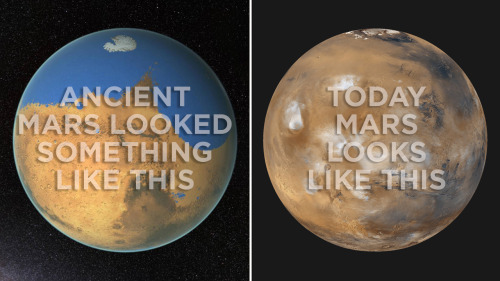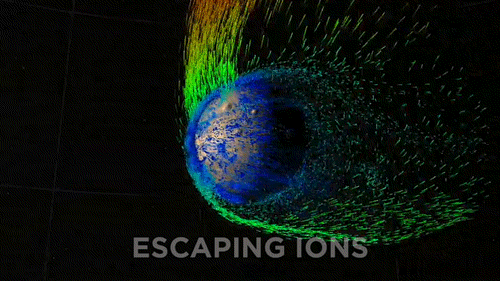“A Little Chocolate Won’t Do Any Harm.” You’ve Likely Heard Your Chocolate-loving Friend Utter
“A little chocolate won’t do any harm.” You’ve likely heard your chocolate-loving friend utter this sentence on more than one occasion, or maybe it’s a mantra that you use yourself. But frankly, it undersells chocolate’s myriad benefits. This sweet is capable of much more than simply “not harming” you – it can help you. In fact, there are scientifically-backed studies that prove chocolate can help you live a better life (and we’re not just talking about the happiness you derive from its deliciousness).
More Posts from Dotmpotter and Others

Now a new filtering device, invented by a US teenager, could provide a cheap and easy way to purify water.
The renewable heavy metal filter, designed by 18-year-old Perry Alagappan, removes 99% of heavy metals from water that passes through it. The filter, built from graphene nanotubes, can be rinsed with a vinegar concentrate and reused. The highly concentrated waste can then be evaporated, leaving a deposit of pure metal that can be used in many different applications.
Alagappan, who was awarded the Stockholm Junior Water Prize at this year’sWorld Water Week, said the filter cost just $20 (£13) to make, up to five times less than existing reverse osmosis technology.
“I became interested in water purification when I visited my grandparents in India, and saw with my own eyes how electronic waste severely contaminated the environment,” said the recent high school graduate from Houston, Texas, on winning the prize.

World Pulse, a magazine and online media nonprofit, is a place for women around the world to report on issues that are important to them.
The goal is to give all women a voice that will in turn help them improve their communities and their lives.
"We’re not about professional journalists, we’re more about that emerging woman leader who’s just coming online and has a powerful contribution to make," says founder Jensine Larson.
World Pulse’s “web” of women grows (PBS NewsHour)

A new online platform to promote women’s economic empowerment is here! UN Women and the Government of Canada recently launched an online platform, the Global Knowledge Gateway for Women’s Economic Empowerment, which aims to re-vitalize women’s economic empowerment by building connections, and providing users with tools and resources necessary to be empowered. Get the link to this exciting new initiative here: www.empowerwomen.org




Ancient Mars had a thick atmosphere filled with carbon dioxide that kept it warm. Rivers trickled into lakes across its surface. Some researchers think there might even have been an ocean. It looked a lot like ancient Earth.
But Mars doesn’t have Earth’s magnetic field, and that has made all the difference. Our magnetic field blocks solar wind - the high energy particles emitted by the sun.
Thanks to new data from the Mars Atmosphere and Volatile Evolution Mission (MAVEN) we know that this solar wind has been assaulting Mars for centuries, and as a result its atmosphere is constantly leaking into space.
Read more here!

The bottom line is that there is no longer a financial or technical excuse to leave low-income and vulnerable people at risk in prolonged power outages.
We’ve seen the breakthroughs in clean energy technology from Tesla and SolarCity, but these companies are primarily marketing only to big commercial customers that want to reduce their utility bills. While this is a good way to build the early markets for clean energy and solar-plus-storage systems, vulnerable residents don’t have time to wait for these innovations to trickle down to their communities — not when they are economically feasible today and mean the difference between protection and tragedy.
(via Build Affordable Housing That Can Weather the Next Superstorm – Next City)

New Guinea is one of the most linguistically diverse places in the world, with more than 1000 distinct languages crammed into an area not much larger than the state of Texas.
Despite this rich variety—for comparison, Europe contains about 280 languages—linguists have only analyzed the grammatical structures of a fraction of the South Pacific island’s languages. Now, Simon Greenhill, a linguist at Australian National University in Canberra, is trying to remedy that situation, by gathering together hundreds of thousands of words from published surveys, book chapters, and articles, as well as the accounts of early European explorers, and putting them into an online database called TransNewGuinea.org.
Updated daily, the site already contains glossaries for more than 1000 languages from 23 different language families, including 145,000 words. There are roughly 1000 different words for “water,” as well as for “louse,” and linguists and language enthusiasts can view all the languages by geographic origin in an interactive map.
Greenhill introduced the scientific community to the site(PDF) this week in the journal PLOS ONE; already, he has used the database to look for clues about how the different languages are related. Through comparative, historical, and computational analyses of the data, he hopes the linguistic community will now use the site to solve long-standing questions about how New Guinean populations expanded and spread their culture.
Researchers at MIT have developed a new method for harnessing energy generated by very small bending motions, which could be capable of harvesting power from a broader range of natural human activities such as walking and exercising.
Yale Environment 360: New Device Harvests Energy From Walking and Exercising, Researchers Say





New 3-D Printer Produces Delicate Soft Objects
A new method of depositing drops of soft materials in a gel could be a new way to print squishy three-dimensional products like living tissue, soft robots and flexible electronics.
In the technique created by University of Florida researchers, a computer-controlled hollow tip precisely embeds fluid droplets of silicone, hydrogel, colloids or living cells inside a granular medium bath the consistency of hand sanitizer. After using the method to make tiny complex soft structures like delicate jellyfish, a tubular knot and a gel version of the nested shapes called Russian dolls, the group says they might have created a new era for engineering.
Keep reading
-
 oxfambookscov-blog reblogged this · 9 years ago
oxfambookscov-blog reblogged this · 9 years ago -
 lizawithazed liked this · 9 years ago
lizawithazed liked this · 9 years ago -
 thobblog reblogged this · 9 years ago
thobblog reblogged this · 9 years ago -
 i-feel-overjoyed-24 reblogged this · 9 years ago
i-feel-overjoyed-24 reblogged this · 9 years ago -
 livelaughlovelead reblogged this · 9 years ago
livelaughlovelead reblogged this · 9 years ago -
 awsomebluefishy-blog liked this · 9 years ago
awsomebluefishy-blog liked this · 9 years ago -
 mog-ur reblogged this · 9 years ago
mog-ur reblogged this · 9 years ago -
 wordgirl179 reblogged this · 9 years ago
wordgirl179 reblogged this · 9 years ago -
 saywhhaaa liked this · 9 years ago
saywhhaaa liked this · 9 years ago -
 fidops liked this · 9 years ago
fidops liked this · 9 years ago -
 allie644 liked this · 9 years ago
allie644 liked this · 9 years ago -
 ajennduenas-blog liked this · 9 years ago
ajennduenas-blog liked this · 9 years ago -
 theseviolentdelights-insta liked this · 9 years ago
theseviolentdelights-insta liked this · 9 years ago -
 lyricagency reblogged this · 9 years ago
lyricagency reblogged this · 9 years ago -
 panda6413-blog liked this · 9 years ago
panda6413-blog liked this · 9 years ago -
 cmoore21033 liked this · 9 years ago
cmoore21033 liked this · 9 years ago -
 annienmilton reblogged this · 9 years ago
annienmilton reblogged this · 9 years ago -
 traceycrotts liked this · 9 years ago
traceycrotts liked this · 9 years ago -
 bamiayo reblogged this · 9 years ago
bamiayo reblogged this · 9 years ago -
 bamiayo liked this · 9 years ago
bamiayo liked this · 9 years ago -
 yes2honey reblogged this · 9 years ago
yes2honey reblogged this · 9 years ago -
 yes2honey liked this · 9 years ago
yes2honey liked this · 9 years ago -
 lyricagency reblogged this · 9 years ago
lyricagency reblogged this · 9 years ago -
 lyricagency liked this · 9 years ago
lyricagency liked this · 9 years ago -
 kanekilen-blog liked this · 9 years ago
kanekilen-blog liked this · 9 years ago -
 infernalhumantrick reblogged this · 9 years ago
infernalhumantrick reblogged this · 9 years ago -
 praetorlutetia liked this · 9 years ago
praetorlutetia liked this · 9 years ago -
 dotmpotter reblogged this · 9 years ago
dotmpotter reblogged this · 9 years ago -
 drfunkenstien1971 liked this · 9 years ago
drfunkenstien1971 liked this · 9 years ago -
 surfing47 liked this · 9 years ago
surfing47 liked this · 9 years ago -
 thyaaraujo reblogged this · 9 years ago
thyaaraujo reblogged this · 9 years ago -
 thyaaraujo liked this · 9 years ago
thyaaraujo liked this · 9 years ago -
 moonshinetaker liked this · 9 years ago
moonshinetaker liked this · 9 years ago -
 allthose-rainbowships liked this · 9 years ago
allthose-rainbowships liked this · 9 years ago -
 vladplantin360 reblogged this · 9 years ago
vladplantin360 reblogged this · 9 years ago -
 frixko liked this · 9 years ago
frixko liked this · 9 years ago -
 1ucybe11e liked this · 9 years ago
1ucybe11e liked this · 9 years ago -
 kaykayeindbq reblogged this · 9 years ago
kaykayeindbq reblogged this · 9 years ago